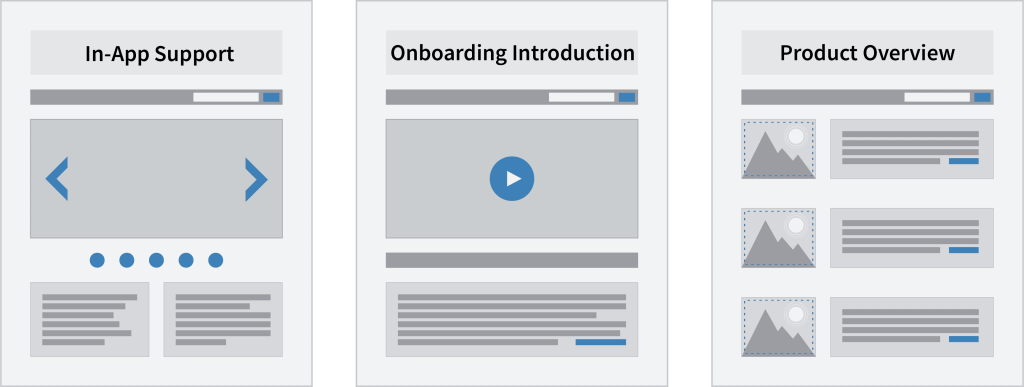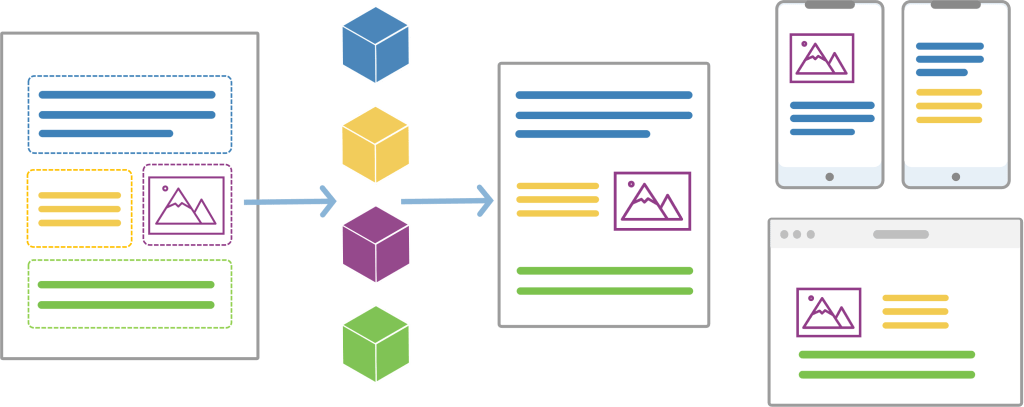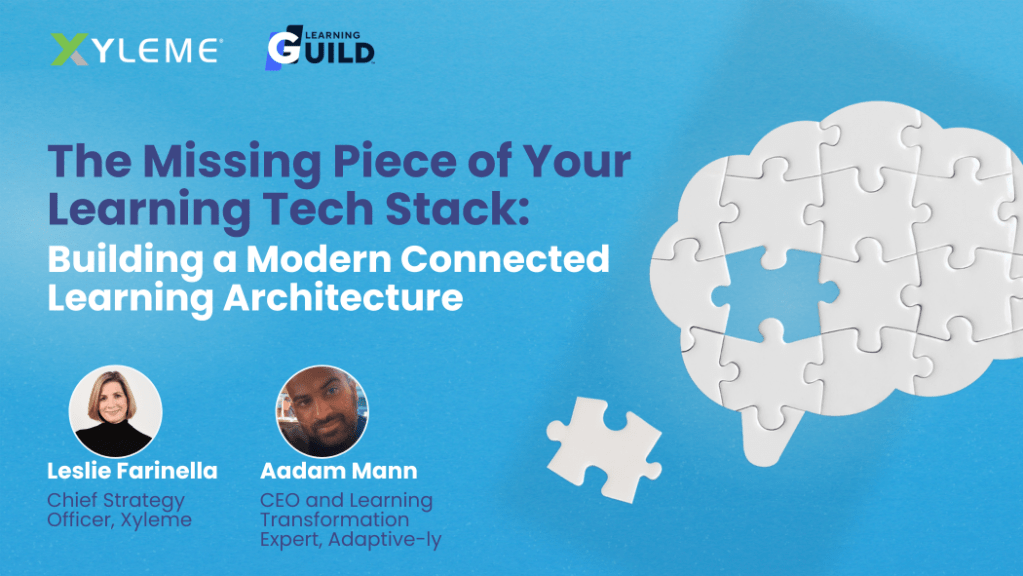Over the last two decades, e-commerce and digital transformation revolutionized how we buy, spanning from everyday groceries to high-tech SaaS products. There isn’t a single corner of commerce that didn’t undergo a sea change regarding go-to-market strategies and delivering on the promise of what we now call the customer experience. The shift in consumer behavior, powered by technology that changes almost daily, requires enormous agility. Learning and Development (L&D) professionals are facing the same dilemma now.
Learning and Development’s evolving role is reshaping enterprises’ strategic landscape today. The focus is on L&D leaders to ensure that learning initiatives are aligned and integral to the company’s strategic ambitions.
Envision learning that is as quick and relevant as the ever-changing business environment. L&D needs to transcend traditional training approaches and shift to a model of continuous skill development. The goal is a learning ecosystem that prioritizes efficiency and scalability while driving organizational growth.
Just as e-commerce changed the buyer’s journey forever, L&D is on the cusp of a similar revolution. The future of L&D content hinges on agility, personalization, and a culture of reskilling and upskilling. This proactive culture serves two fundamental strategic business needs related to growth: engaged, successful learners and the ability to meet the relentless pace of industry transformation.
We recently sat down with Xyleme’s Leslie Farinella, Chief Strategy Officer, and Kizaan Knapp, Vice President of Marketing, to discuss how L&D can take a page from marketing’s playbook and why it matters.
What follows is an edited version of our conversation, condensed for clarity.
Q&A: Adaptability & Agility
Q: What can L&D learn from the transformation marketers went through?

A: L&D can learn to anticipate and adapt to changes in learning needs and preferences. This involves creating a flexible learning environment that can quickly evolve with changing demands, mirroring the marketing industry’s response to the shift to online shopping.
Adapting the learning environment is crucial because it addresses the need for rapid acquisition of information and the versatility of where learning can take place. This ensures that learning is accessible and timely, catering to the modern learner’s needs.
Q: Why is organizational agility crucial for future success?

A: Organizational agility is essential because it enables adaptation and innovation in the face of accelerating change. It allows an organization to respond quickly to market signals, customer behavior, and internal talent development needs.
In marketing, organizational agility helps predict consumer behavior, such as knowing when a potential customer is ready to make a purchase, which is crucial for timing sales strategies effectively.
Q: Why is a one-size-fits-all approach ineffective in L&D?

A: Effective L&D requires understanding and addressing these distinct learner profiles to ensure content relevance and engagement.
Personalized content, tailored to the specific needs and experience levels of learners, ensures that they receive information that is directly applicable to their job roles and challenges. This makes the learning process more efficient and effective.
Q: How can L&D apply organizational agility to its advantage?

A: L&D can apply organizational agility by being attuned to when employees are ready to progress to their next job role. This involves providing the necessary information and skills for career advancement and understanding the organization’s current and future skills gaps.
L&D should focus on equipping employees with essential knowledge, offering visibility into available jobs and required skills for advancement, and accurately identifying current skills gaps and future needs.
Q&A: Create Small, Targeted Content
Q: What are the shifts that L&D must make to better support learners?

A: Fluid content refers to the creation of learning material in smaller, interchangeable chunks or ‘content blocks’. These blocks are designed to be combined in various ways across different learning modalities, enabling a seamless and continuous learning experience for employees.
Content blocks allow for greater efficiency and flexibility in building training programs. By creating modular content, L&D can easily tag, mix, and match elements to scale training development, catering to diverse learning needs and styles. This also supports the ability to create content that is format agnostic.

Q: What is the significance of making content 'format agnostic'?

A: When content is format agnostic, it can “act like code” with semantic value, allowing learning designers to tag content based on audience, region, or product relevance. This enables a dynamic assembly of content, similar to how code is used to build versatile software applications.
Let’s think about content blocks in this context. When a single block is updated, the change is automatically propagated everywhere that block is used. This streamlines updates, making them quick and efficient compared to the tedious process of manual copying and pasting, which is prone to inconsistencies and errors.
By linking to content blocks, L&D teams can reduce the overhead associated with maintaining and updating content. It eliminates repetitive manual work, thereby freeing up resources and reducing the risk of content becoming outdated or inconsistent. Staying to to the core message of your L&D content is almost impossible without tools that support a content strategy like this.
Q&A: Utilize Cohesive & Targeted Messaging
Q: Why is it important for learning and development to be cohesive?

Q: What does 'fit for purpose' mean in the context of content development in L&D?


Q: Can you give an example of how marketing maintains a cohesive message across various content channels?

A: In marketing, when developing a campaign, different content is created for different platforms, like a website, email, LinkedIn, or Instagram. Despite the variation in channels and formats, each piece of content retains a cohesive message that aligns with the campaign’s overall objectives.
Q&A: Embrace Automation to Personalize
Q: Why is automation becoming necessary for training delivery?

Q: What does personalization mean beyond basic customization like using a learner's first name?

A: True personalization involves a deep understanding of learners’ needs and challenges. It’s about providing content that is genuinely relevant and beneficial to their development, rather than superficially customizing content.
Your L&D tech stack should be built to enable this kind of advanced personalization, but in order to do that, you also need human content governance.
Q: How can technology systems be optimized to support personalized learning with governance?

A: Technology systems must be fed with accurately tagged content to make effective matches with learner profiles. This requires L&D to be diligent in content tagging, allowing for customization based on the learner’s specific needs and experience.
When content is broken down into smaller chunks, there is a greater opportunity to personalize it. This approach allows for the creation of fit-for-purpose content that can be better aligned with a learner’s experience level and specific learning needs. This is the key to unlocking agility.
View the The Missing Piece of Your Learning Tech Stack webinar on how many organizations are looking to modernize their tech stack to drive employee & customer engagement, improve learner experience & outcomes, and build a culture of continuous learning.
Q&A: Streamline Your Ecosystem & Make Data-Driven Decisions
Q: How can L&D use technology to create a cohesive learning system?

A: By integrating various technologies such as LMS, LXP, VR, and AR, L&D can create a seamless and reinforcing learning ecosystem. Connecting these technologies with learning platforms and HR systems enables a holistic view of employee performance and training needs.
Connecting different technologies allows L&D to analyze employee performance metrics and hiring needs. These comprehensive data insights help identify current skills gaps and anticipate future skills requirements, informing targeted training efforts.
Q: How will AI tools contribute to the future of L&D?

A: AI tools are poised to identify patterns and trends that can help automate connections across systems. This could revolutionize L&D by enabling predictive analysis and proactive training development, thereby driving performance improvement within the organization.
A one-size-fits-all approach fails to address the unique challenges and skill development needs of individual learners, but creating enough content to meet these needs without the help of AI would be overwhelming and nearly impossible.
Q: Why is a focus on skills so important in L&D right now?

A: Focusing on skills makes it easier to track and measure training success through concrete metrics such as retention rates, promotion readiness, and the ability to quickly fill vacant positions. This leads to more impactful and quantifiable outcomes from training programs.
About Leslie & Kizaan
Leslie Farinella, Chief Strategy Officer
Leslie Farinella is passionate about blending technology, business strategy, process improvement, and change management to tackle significant and intricate business challenges. As the Chief Strategy Officer at Xyleme, Leslie plays a pivotal role in assisting organizations to transform their content strategies by leveraging technology to revamp the way they design and develop learning content on a large scale. With a commitment to creativity and perseverance, Leslie strives to provide innovative solutions that empower organizations to reimagine their content strategies and achieve their goals.
Kizaan Knapp, VP of Marketing
Kizaan Knapp is the Vice President of Marketing at Xyleme. With an exceptional track record of over 15 years in marketing and strategy, Kizaan is widely recognized for her expertise in driving brand growth and market expansion. Her work is characterized by a harmonious blend of creativity, strategic thinking, and data-driven insights, manifesting in Xyleme’s positioning as an industry thought leader.






